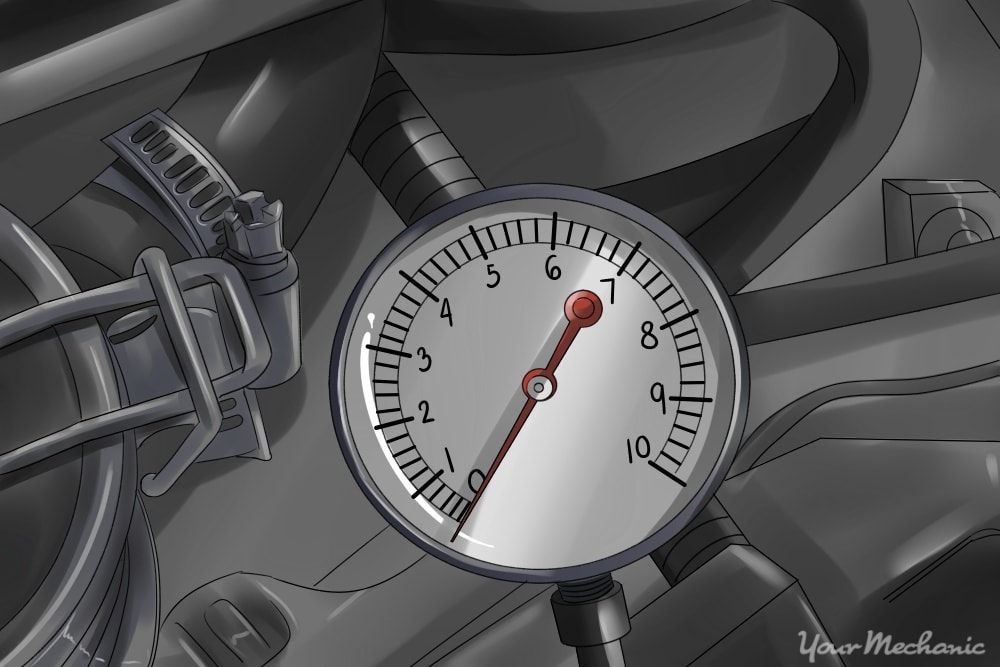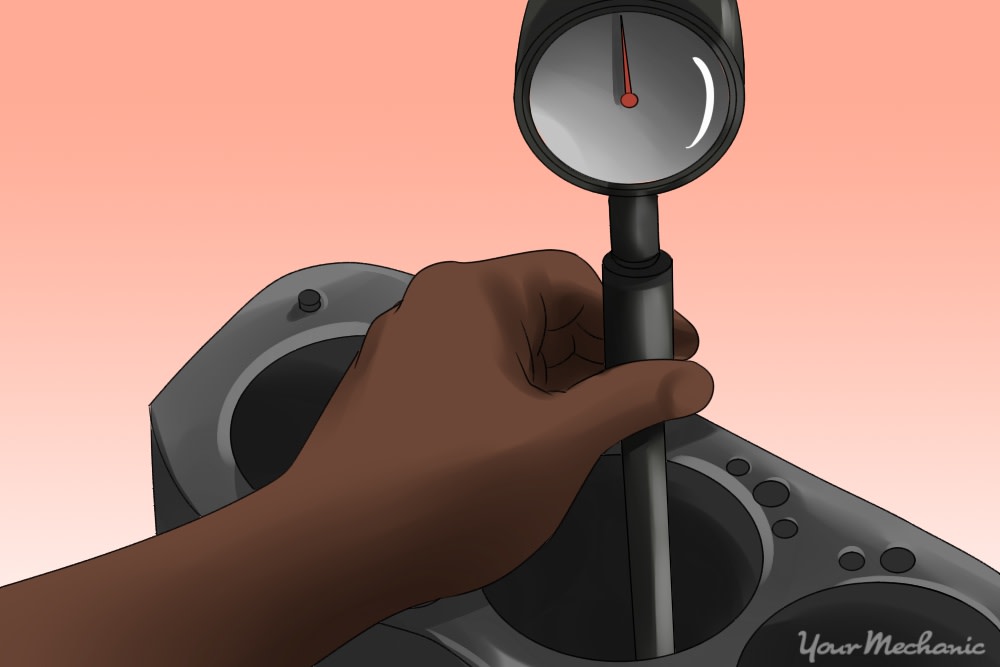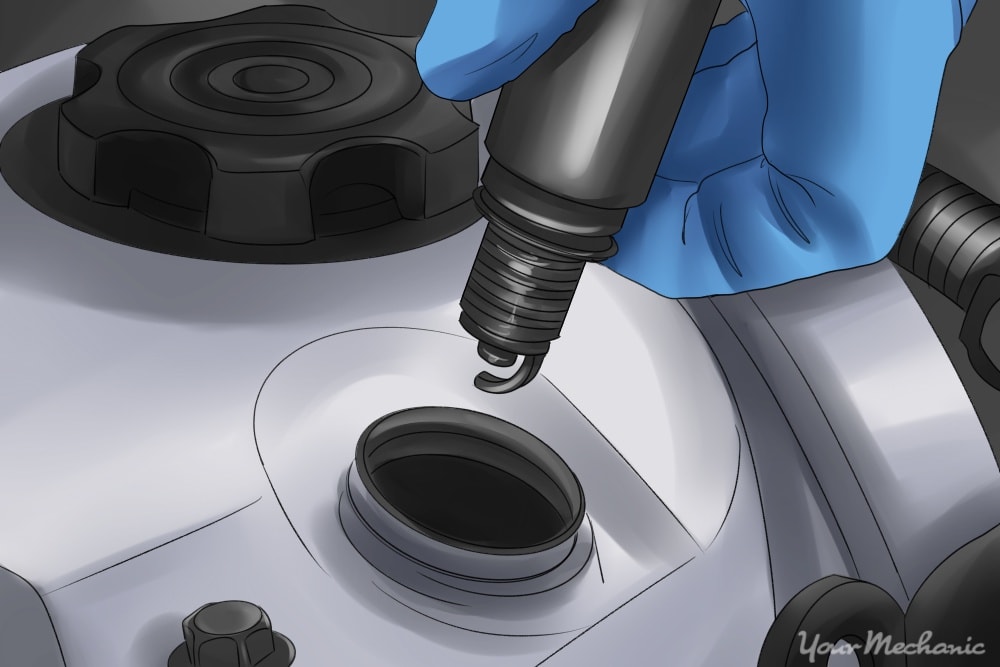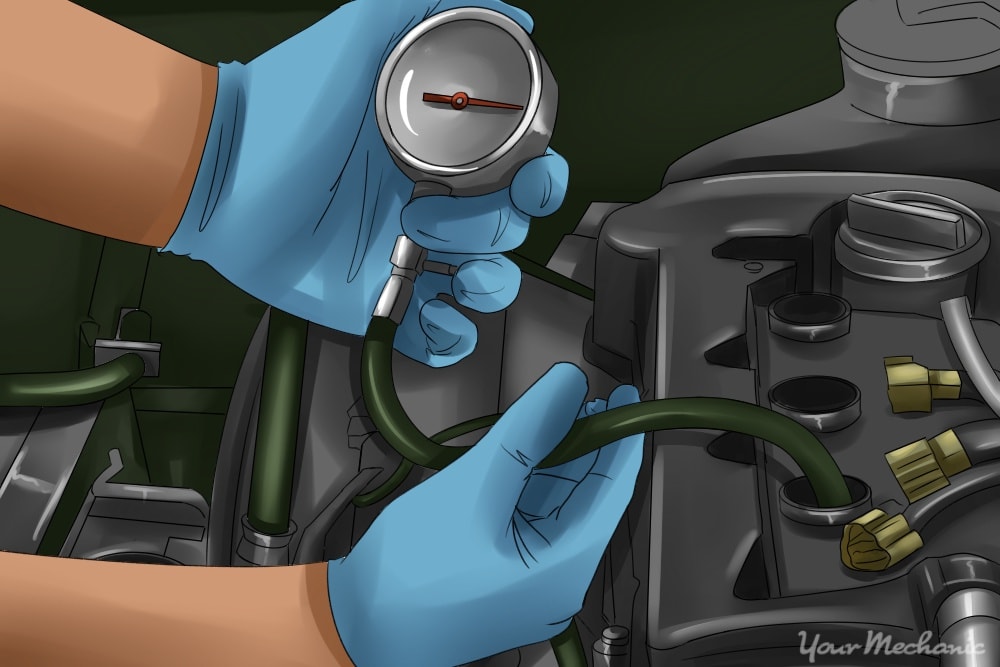

Whether you’re building a new engine and you need the metric, or you’re curious to know how efficient your car uses fuel, you have to be able to calculate the engine’s compression ratio. There are a few equations needed to calculate the compression ratio if you’re doing it manually. They may seem complicated at first, but they’re really just basic geometry.
An engine’s compression ratio measures two things: the ratio of the volume of gas in the cylinder when the piston is at the top of the stroke (top dead center, or TDC), compared to the volume of gas when the piston is at the bottom of the stroke (bottom dead center, or BDC). Put more simply, the compression ratio is the measurement of compressed gas to uncompressed gas, or how tightly the air/gas mixture fits within the combustion chamber before it’s ignited by the spark plug. The more tightly this mixture fits, the better it burns and the more energy is converted into power for the engine.
There are two methods you can use to calculate an engine’s compression ratio. The first is the manual version which requires you to do all the math as accurately as you can, and the second - and probably the most common - requires a pressure gauge fitted into an empty spark plug socket.
Method 1 of 2: Measure the compression ratio manually
This method requires very precise measurements, so it’s important to have very accurate tools, a clean engine, and to double- or triple-check your work. This method is ideal for someone who is either building an engine and has the tools on hand, or those who have an engine that is already taken apart. It would be very time consuming to take apart an engine to use this method. If you have an engine that is assembled, scroll down and use Method 2 of 2.
Materials Needed
- Bore gauge
- Calculator
- Degreaser and clean rags (if necessary)
- Manufacturer’s manual (or car manual)
- Micrometer
- Pad, pen, and paper
- Ruler or tape measure (must be very accurate down to the millimeter)
Step 1: Clean the engine Thoroughly clean the engine cylinders and pistons with degreaser and a clean rag.
Step 2: Find the bore measurement. A dial bore gauge is used to measure the diameter of a hole, or in this case, a cylinder. First determine the approximate diameter of the cylinder and calibrate your dial bore gauge with a micrometer. Insert the gauge into the cylinder and measure the bore multiple times in different places within the cylinder and write down the measurements. Add up your measurements and divide by however many you took (usually three or four is plenty) to get the average diameter. Divide this measurement by 2 to achieve the average radius of the bore.
Step 3: Calculate the cylinder measurement. Using an accurate ruler or tape measure, measure the height of the cylinder. Measure from the very bottom to the very top, ensuring your ruler is level. This number calculates the stroke, or the area the piston sweeps as it moves up or down the cylinder one time. To calculate the volume of the cylinder use this formula: V = π r2 h
Step 4: Determine the combustion chamber volume. Locate the volume of the combustion chamber in your vehicle’s manual. The combustion chamber volume is measured in cubic centimeters (CCs) and measures how much matter it takes to fill the combustion chamber bore. If you’re building an engine, consult the manufacturer’s manual. Otherwise, consult the car manual.
Step 5: Find the piston compression height. In the manual, find the compression height of the piston. This measurement is the distance between the centerline of the pin bore and the top of the piston.
Step 6: Measure the piston volume. In the manual again, find the dome or dish volume of the piston, also measured in CCs. A piston with a positive CC value always is referred to as a ‘dome’ that sticks up above the compression height of the piston, while a “dish” is a negative value that accounts for the valve pockets. Usually, a piston has both dome and dish features, and the final volume is the sum of both features (dome minus dish).
Step 7: Find the piston-to-deck clearance. Calculate the piston-to-deck clearance volume with this calculation: (Bore [measurement from Step 2] + Bore × 0.7854 [a constant that converts everything to cubic inches] × distance between piston and deck at top dead center [TDC]).
Step 8: Determine the gasket volume. Measure the head gasket’s thickness and bore to determine the gasket volume. Do this almost the same way you would the deck clearance (Step 7): (Bore [measurement from Step 8] + Bore × 0.7854 × gasket thickness).
Step 9: Calculate the compression ratio. Calculate the compression ratio by solving this equation:
If you end up with a number of, say, 8.75, your compression ratio would be 8.75:1.
- Tip: If you don’t want to calculate the numbers yourself, there are a number of compression ratio calculators online to solve it for you; click here.
Method 2 of 2: Use a manometer
This method is ideal for those who have an assembled engine, and want check the vehicle's compression ratio through the spark plug sockets. You will need assistance from a friend.
Materials Needed
- Manometer
- Spark plug wrench
- Work gloves
Step 1: Warm up your engine. Run your engine until it gets to normal temperature. You don’t want to try this when the engine is cold because you won’t get an accurate reading.
Step 2: Remove the spark plugs. Turn off the ignition completely and disconnect one of the spark plugs from the cable connecting it to distributor. Unscrew the spark plug.
- Tip If your spark plugs are dirty, you can use this as an opportunity to clean them.
Step 3: Insert the manometer. Fit the nozzle of the manometer into the hole where the spark plug was fixed. It’s important that the nozzle is fully inserted into the chamber.
Step 4: Test the cylinder. While you’re holding the manometer, have a friend start the engine and accelerate the car for about five seconds so you can get a proper reading. Turn off the engine, take out the manometer nozzle, and refit the spark plug with the proper torque, as listed in the manual. Repeat these steps until you’ve tested each cylinder.
Step 5: Perform a pressure check. Each cylinder should have the same pressure, and they should match the number in the manual.
Step 6: Calculate the PSI to compression ratio. Calculate the PSI to compression ratio. For example, if you have a manometer reading of about 15 and your compression ratio is supposed to be 10:1, then your PSI should be 150, or 15×10/1.








